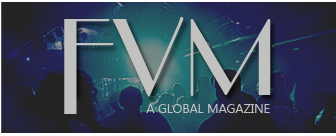THE OOH ADVERTISING & DESIGN SECRETS TO SUCCESS
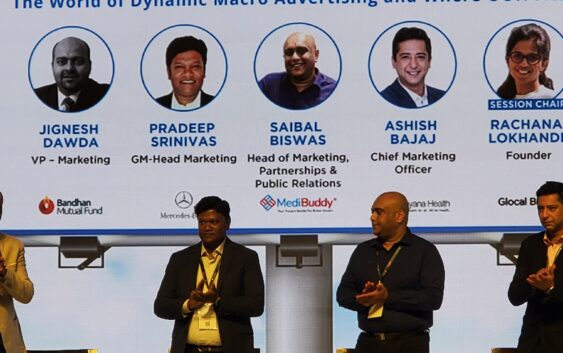
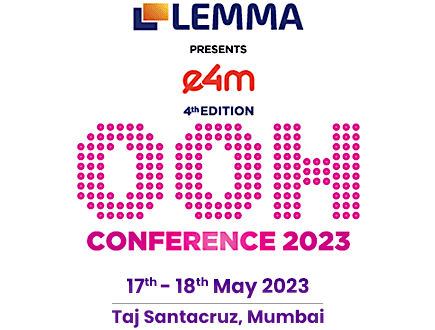
The NEONS OOH Conference & Awards 2023, the oldest and most esteemed recognition of creative excellence in the industry, was proudly hosted by the exchange4media Group at the luxurious Taj Mumbai. The Conference & Awards of NEONS OOH seeks to explore the future of how brands have recognized the importance of top-notch outdoor advertising in generating impressions in the minds of consumers, and how to make the most of it. The summit was participated by 200+ business leaders including brands, agencies, media companies, ad tech, research, and more. OOH is for Out-of-Home.
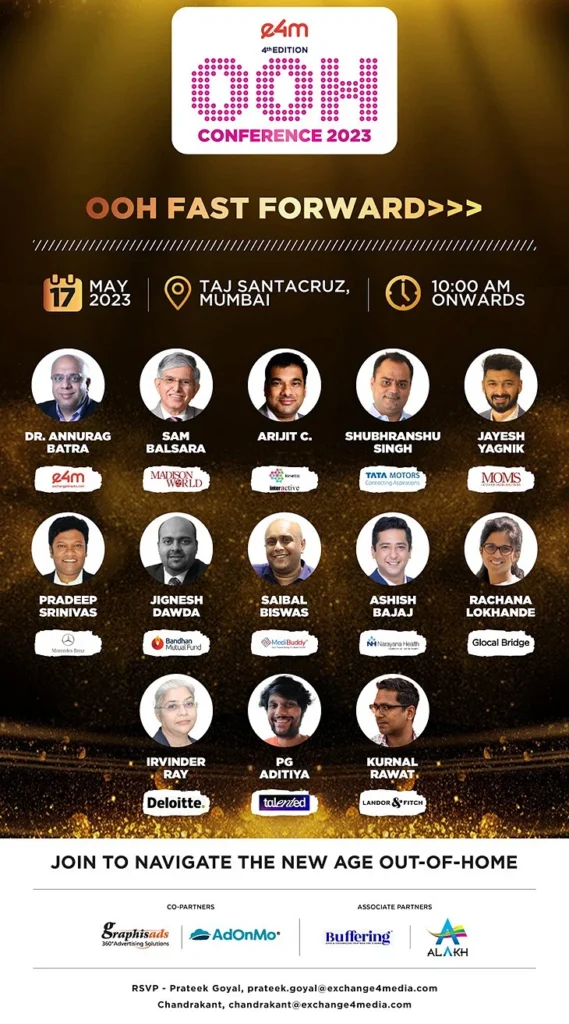
Outdoor advertising is a great way to get your message out there in a mass-market way. You can use it for branding, sending out broad messages, backing up campaigns, and more. Outdoor advertising has two big advantages over other forms of advertising: it’s size-friendly and it’s mass-outreach, so it has a big impact.
The industry leaders and professionals from the Out-of-Home (OOH) ecosystem discussed a variety of topics related to the development of OOH strategies and the expansion of the OOH ecosystem, explored the exciting new practices in OOH, discussed the power of content & design and discussed the current state of the OOH sector and how brands are recovering from a period of stagnation, as well as what the future holds for the industry.
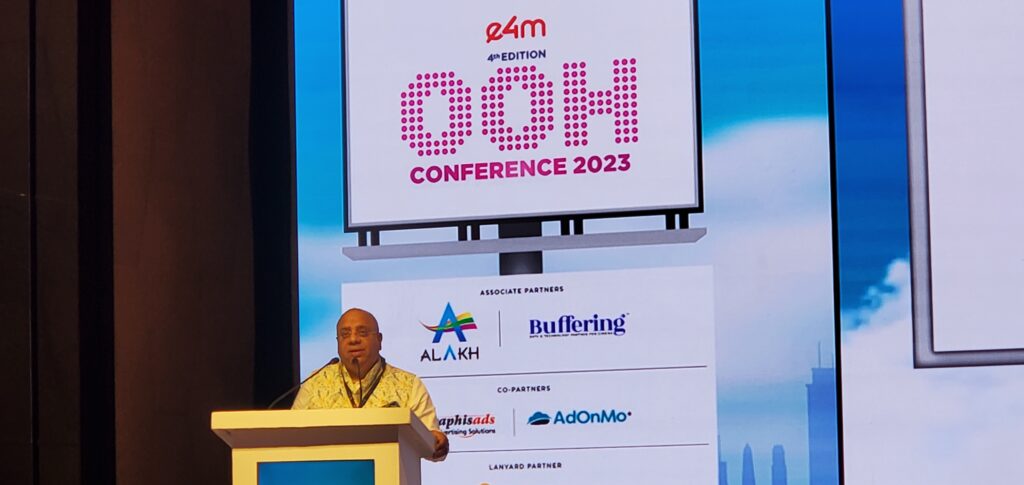
The event kickstarted with a welcome address by Dr. Annurag Batra, Chairman & Editor-in-Chief, BW Businessworld & exchange4media highlighting how the industry has embraced innovation, with new technologies, formats, and creative ways for advertisers and their agencies to get their message to the consumers, in all areas of their business to keep up with where advertising and consumers are going.
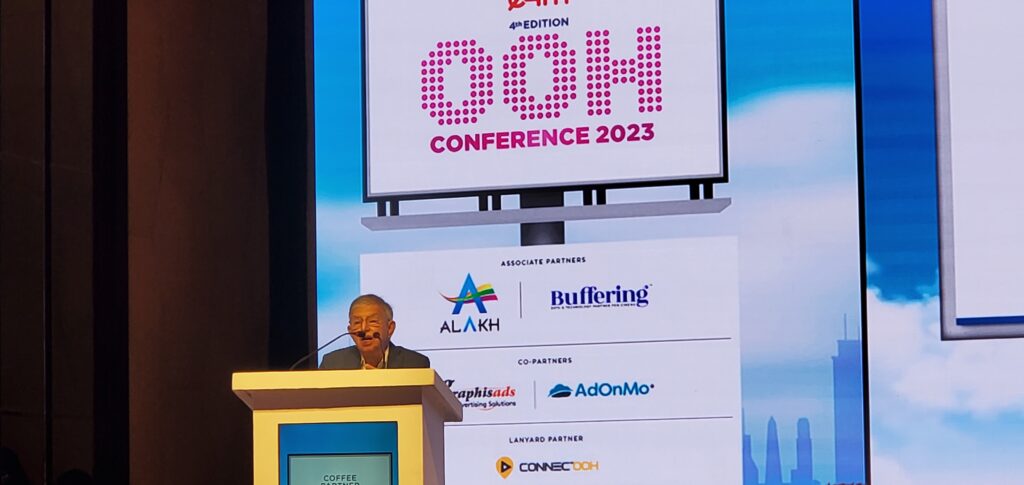
Followed by the welcome note, Sam Balsara, Chairman, Madison World shared insights on the main theme of the conference’ OOH Fast Forward’.
During his opening address on ‘OOH Fast Forward’ at the 4th edition of e4m Neons OOH Conference, Balsara, who is an advertising and marketing veteran, said, “Outdoor, as an industry, has been growing but the fact that its share has come down globally means the other media are growing much faster. We must take measures so that the outdoor industry grows faster than it is growing now and gain its market share.”
Out-of-home advertising is only 4% of the global market, but Madison World’s Chairman Sam Balsa said on Wednesday that they can make up for it in the next couple of years with the help of tech in outdoor advertising.
“I am bullish about the prospects in OOH in the coming years. One reason is that technology has entered OOH. Once you have the benefit of technology, scaling up becomes faster and advertisers love the input of technology. The arrival and rapid adoption of digital OOH around the world is another reason. It will happen in India too, sooner or later,” he noted.
Having been in the advertising and marketing business for over 50 years, Balsara said that it’s important to look at which countries are doing well in terms of OOH advertising.
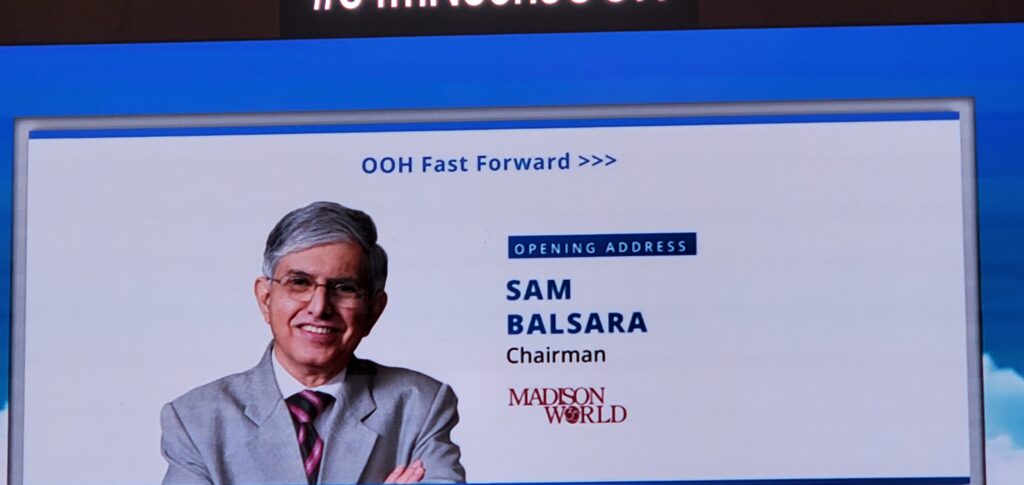
“We need to develop category-wise knowledge and expertise. We need to develop case studies on when OOH works, how it works, why it works, what works and where it does not work. We need to understand why some countries do better. Why is Japan doing better? And try and incorporate some of those learnings here. We need to talk about all this,” he said.
According to Balsara, Japan has a market share of 12% in OOH around the world, which is second only to France, followed by China, Russia and Germany. On the other hand, the average market share for OOH is lower in countries like the United Kingdom, Brazil, the USA and Italy. We need to find out what other countries are doing well when it comes to OOH and figure out how they’re doing it.
“Digital never fails to surprise. Globally, digital has gone up in share from 33% to 56% today. Digital has penetrated every medium. It contributes 27% globally in outdoor advertising,” he said, observing that digital alone is larger than all other mediums put together.
Listing out the reasons for the slow growth rate of outdoor advertising, Balsara said it is the lack of advertiser’s confidence in OOH.
“This lack of confidence could be firstly, due to a lack of credible third-party monitoring. Secondly, third-party credibly industry-supported and recognized viewership data is still eluding us. Thirdly, there is a lack of clear guidelines from local regulatory bodies on the legalities of the sites in question, and lastly inadequate selling efforts by sales teams to both educate and sell to media planning agencies and advertisers resulting in inadequate awareness of the opportunities that exist in outdoor unlike the efforts put in by print and tv,” he said.
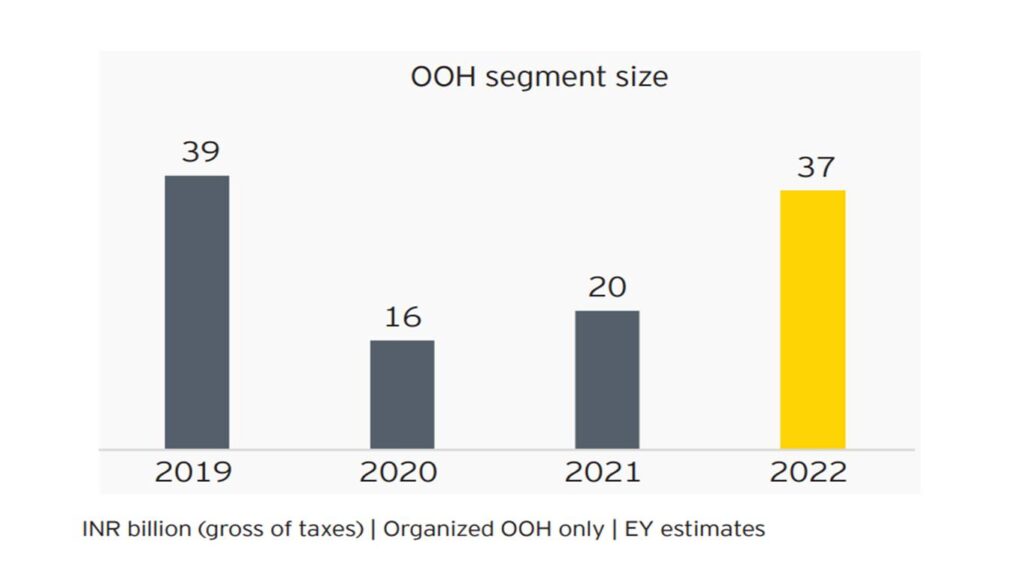
As per Ernst & Young (EY), the OOH media segment has seen a significant growth of 86% in the year 2022, reaching an estimated INR 37 billion. This segment includes both traditional and transit media, but does not include untracked, unstructured OOH media. This segment has reached approximately 94% of its revenue levels of 2019. Traditional OOH media accounted for 59% of the revenues in 2022, remaining the largest segment, while transit media made up the remaining 41%. Furthermore, digital OOH media contributed 8% to the segment’s revenues in 2022, having increased from 6% the year before.
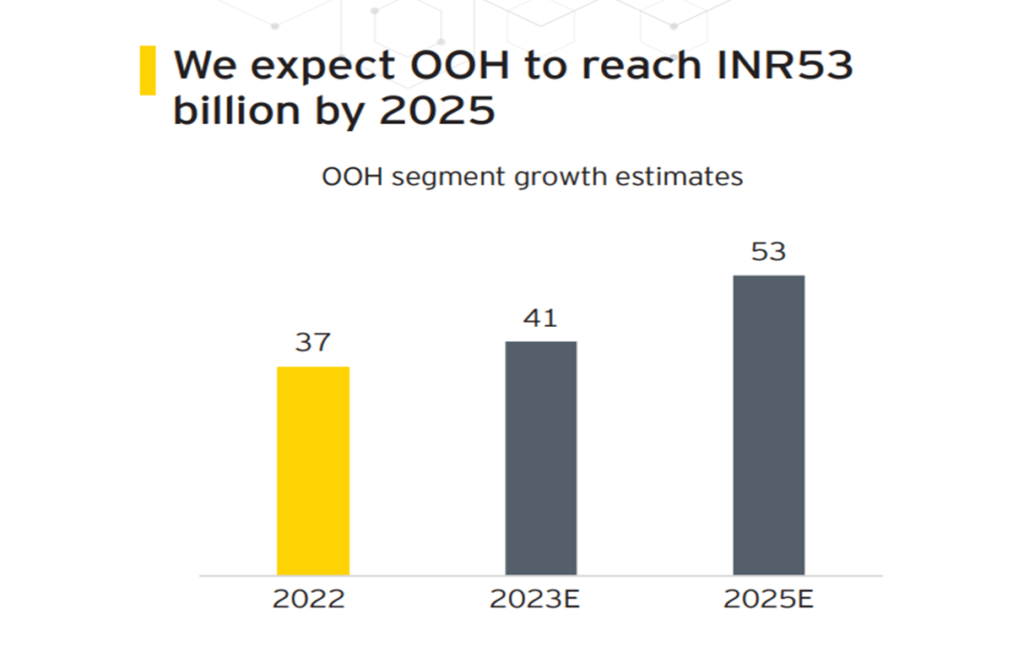
E&Y expects the OOH segment to exceed 2019 (pre-COVID-19) levels in early 2023, and achieve revenues of INR53 billion by 2025.
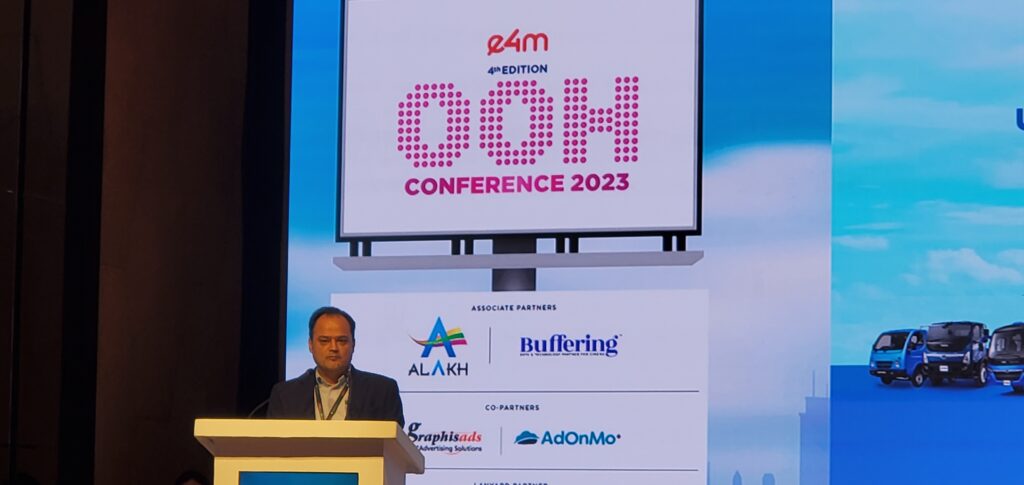
Shubhranshu Singh, Vice-President, Marketing, Domestic & IB, Commercial Vehicles Business Unit, Tata Motors delivered the Leadership Address on the topic ‘From Innovation to Actualization: Unravelling Exciting New Practices in OOH’. “I think corporate life and human society in general is very similar to a beehive. And I think pollinating flowers is the representation of what is attractive in advertising.” Singh drew an analogy between flowers and pollination to illustrate the magnificence of OOH.
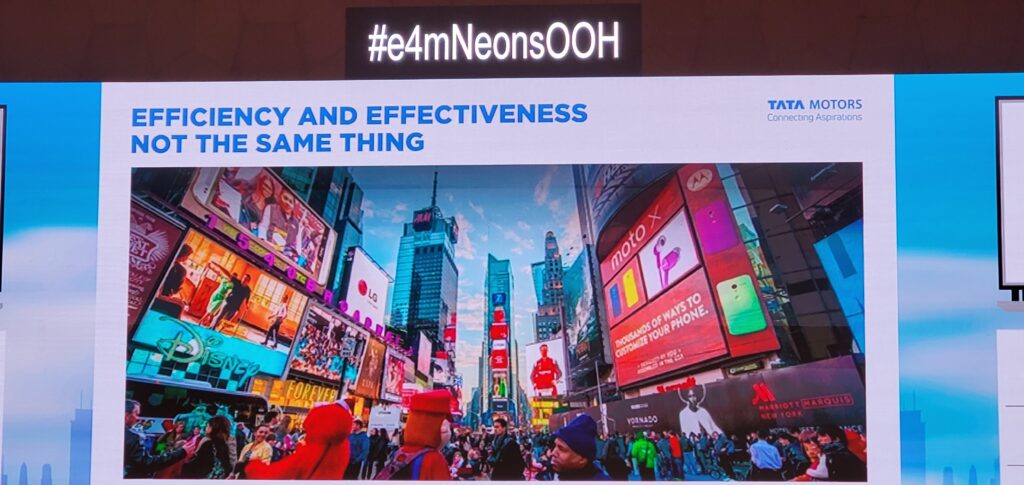
Singh also highlighted the significance of large billboards and hoardings in conveying to the consumer a sense of commitment to the brand and the need for the product to be of high quality. “Once they are soaked in the idea that this is a brand worthy of respect, that it must be a big deal to them, which is why they are putting up hoardings everywhere, or it is a big deal to them, which is why I see the television ad reflected in print and then I see the print ad in a mutant way upon an outdoor holding. This signals to them that you are serious contenders, that it is worthy of respect & trust and trust building can happen only with largeness.”
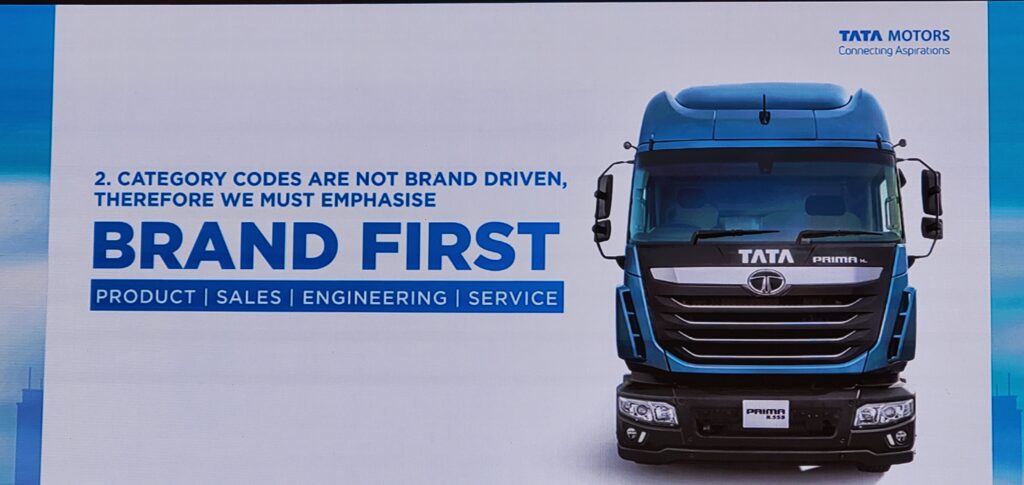
Recently Tata Motors launched the “Desh ke Trucks” campaign, an attractive brand positioning for its India’s most popular truck models – the Prima, the Signa and the Ultra – to promote its cutting-edge trucks, innovative features, improved features, digitization, cost-effectiveness, fuel economy, safety, advanced technology, interconnectivity, driver efficiency and cabin comfort through entertaining, slice-of-life commercials.
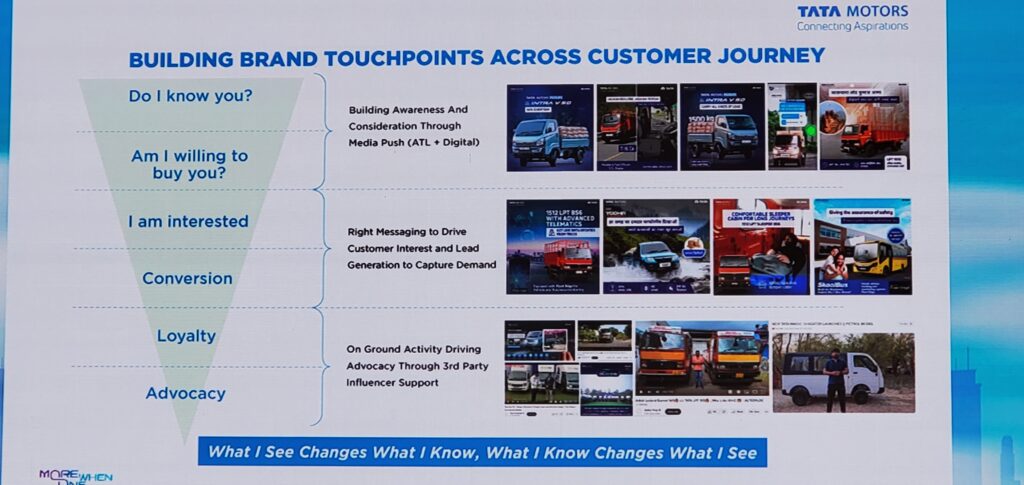
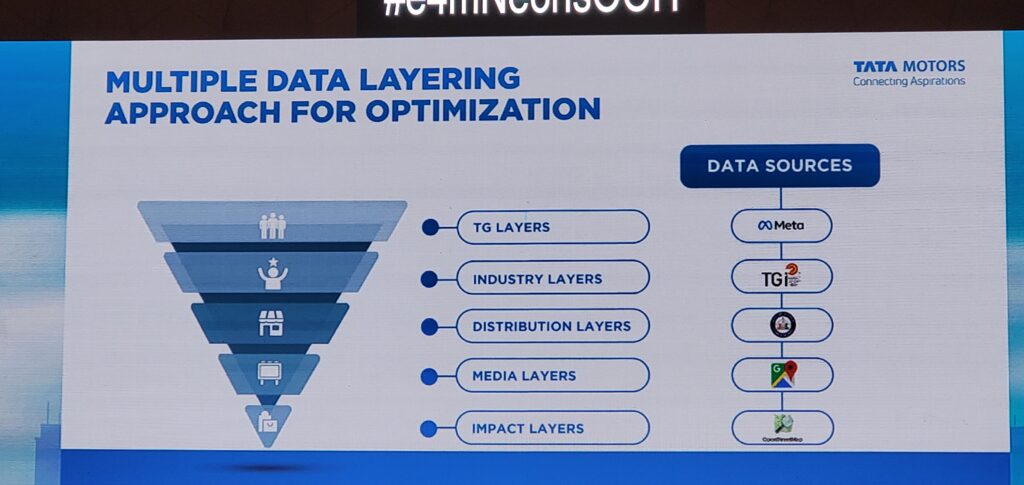
In conclusion, Singh highlighted the importance of combining data and innovative OOH strategies in order to capture the attention of truck drivers and logistics professionals that the company is attempting to reach. The most straightforward approach to achieving this goal is through the use of OOH boards as well as advertising. “I have great respect for data but I think we must also be mindful of how to lift the brand to greater and greater heights. And in that, there has to be a conspiracy of collaboration. I would say conspiracy between the right brain and the left brain, between the creatives and the analysts, between the digital voters and the traditional media voters. If we do that, we will be in a better place as an industry, as universal brands, and certainly out of home will grow by leaps and bounds in this country.”
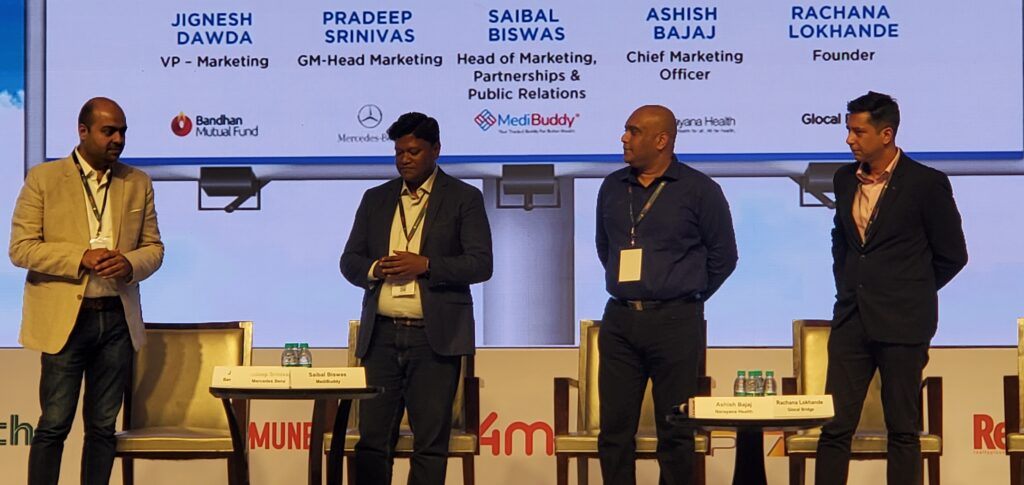
The panel discussion on the topic ‘The World of Dynamic Macro Advertising and Where OOH Fits In’, the panellists included Jignesh Dawda, VP – Marketing, Bandhan Mutual Funds, Pradeep Srinivas, GM-Head Marketing, Mercedes Benz, Saibal Biswas, Head of Marketing, Partnerships & Public Relations, MediBuddy and Ashish Bajaj, Chief Marketing Officer, Narayana Health, the session moderated by Rachana Lokhande, Founder, Glocal Bridge Narayana Health’s Ashish Bajaj on the role that OOH plays in his overall marketing mix said, “Usually hospitals draw patients from a 20-50 km radius so our marketing strategy has to be hyperlocal, which is where OOH plays a dominant role. We have seen our top-of-the-line awareness and OPD footfalls going up as a result of such hyperlocal outdoor campaigns.”
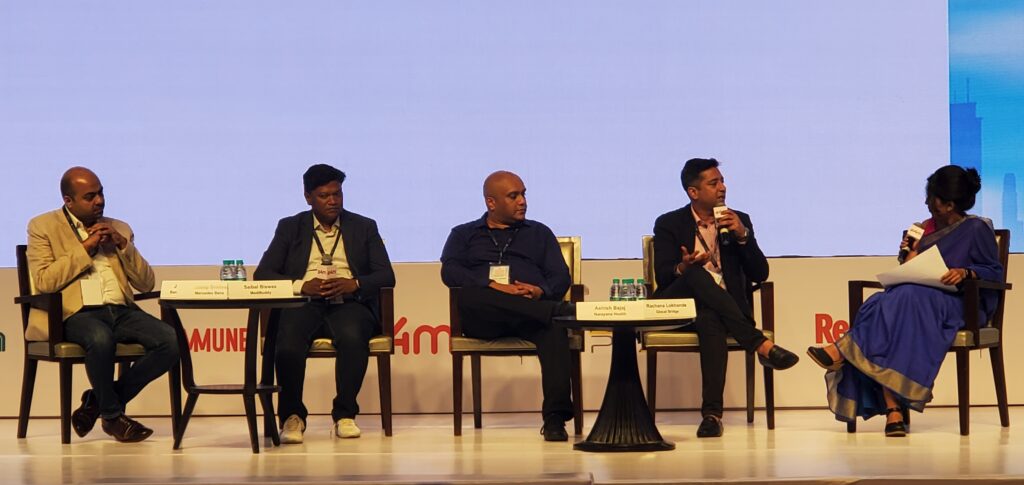
The importance of OOH lies in reinforcing the message contextually emphasized For Medi Buddy’s Saibal Biswas. “We have around 800 top Indian corporates using our services and many of them are not even aware that they have access to it for free. So for us to ensure that their employees are reminded to use their wallet for medicine deliveries or health checkups and doctor consultations, putting up outdoor ads in tech parks serves as an excellent reminder.”
On the importance of OOH for luxury cars, “Mercedes Benz employs it as a pure branding mechanism because it provides the most clutter-free environment as opposed to digital which is the most cluttered. OOH is effective and quick,” commented Pradeep Srinivas.
On how marketers can take advantage of the digital transformation of the media, Srinivas outlined how Mercedes Benz leverages customer pin codes to execute targeted campaigns in consumer-centric societies to boost sales.
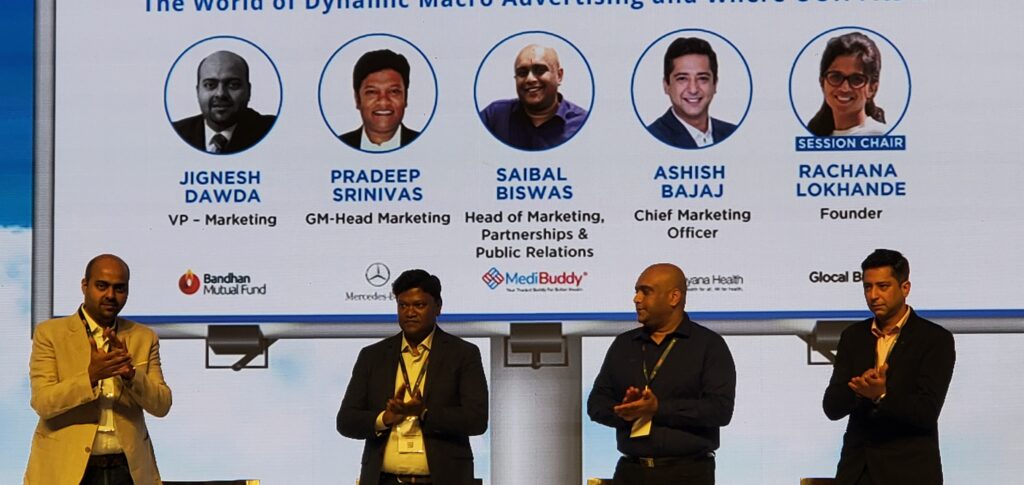
When asked what they expected from OOH in terms of data, panellists unanimously stressed the need for a unified metric or currency for the purpose of quantifying and standardizing rates across the industry. Dawda stated, “Not just post, OOH also needs ‘pre-data’. Standardization of data and rates is required for us to evaluate and select outdoor locations based on their impact. I think that OOH can give digital a run for its money if these two things can be achieved.” Biswas added, “Unlike TV or Digital that have defined metrics, the difficulty in measuring the effectiveness of OOH campaigns is what’s holding it back.”
Lokhande reiterated the need for effectiveness, transparency and measurability. “We do have the data, but the industry needs to come together to see how it can yield results. Out-of-home is undergoing a transformation which needs to be integrated at different levels. While the data has been launched, it has not reached the advertiser yet. But it is working. It is being slowly adopted. So, I see that OOH does have the scope to be part of the mainstream, to be part of the omnichannel assets; Not just for brand building, but with the digitization of out-of-home and with more and more place-based media, it can also be part of performance marketing.”
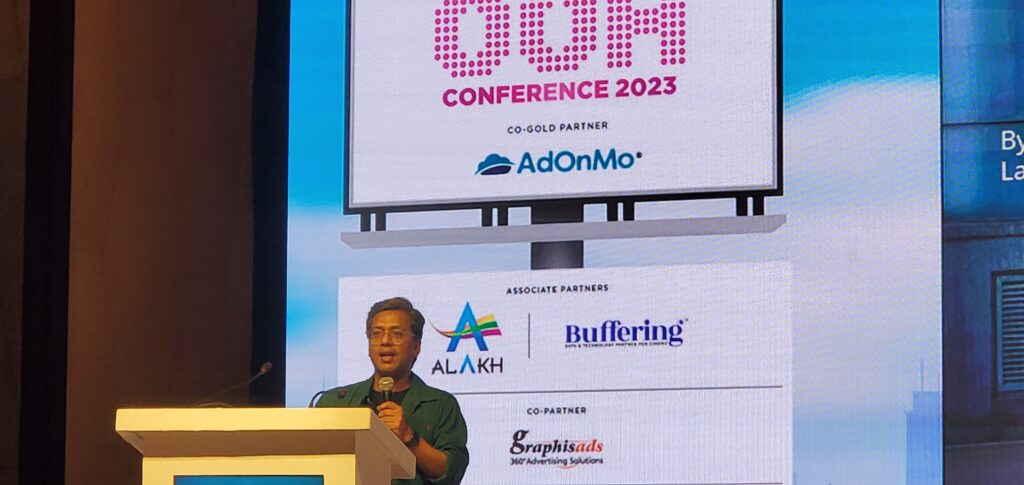
With great assets, you can create iconic brands, Kurnal Rawat, Creative Director, Landor & Fitch India strongly believed as he spoke on the topic ‘Power of Content & Design’.
The power of design, can help create iconic brands. “With outdoor, of course, being one of the most amazing areas of expression.”
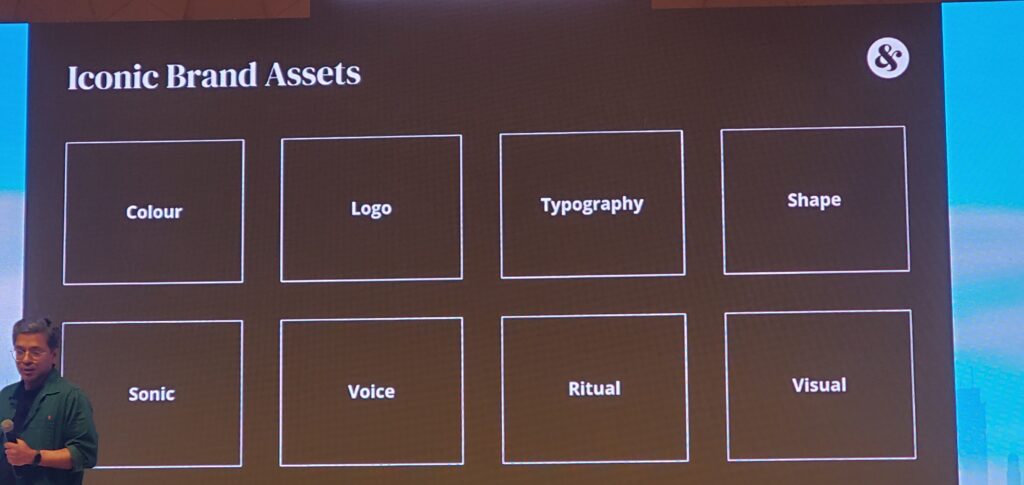
“These brands all have very well-crafted sacred brand assets. That’s what we talk about. When you have great assets, you can create iconic brands. As we know, we have been talking about how the consumer is changing and brands really need to create a narrative which creates a meaningful connection between their brand assets. And I think brands are not really leveraging their assets to the optimum.”
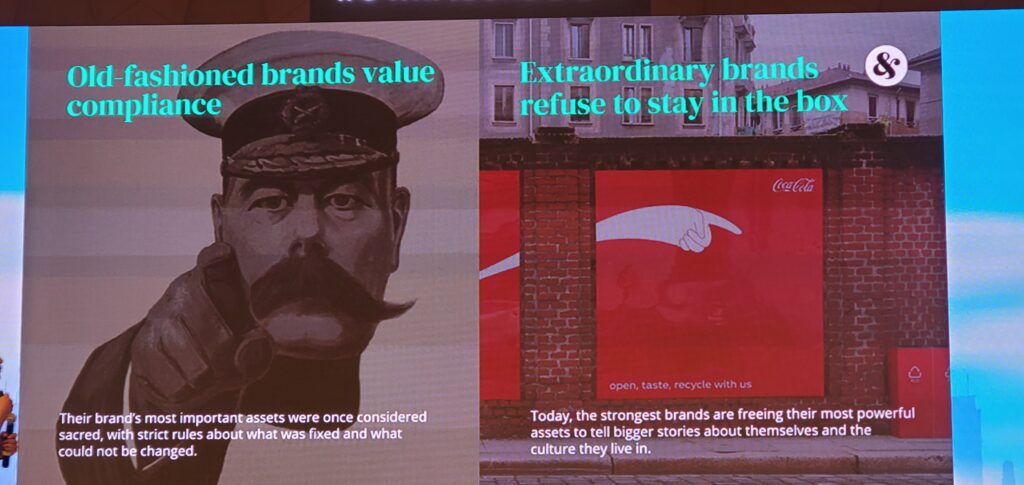
The session which began with a series of visuals, accompanied by musical accompaniment, and the audience was asked to identify the brand. The speaker noted that in recent years, the industry has been inundated with outdated formats of rules and regulations, which have caused brands to become overwhelmed.
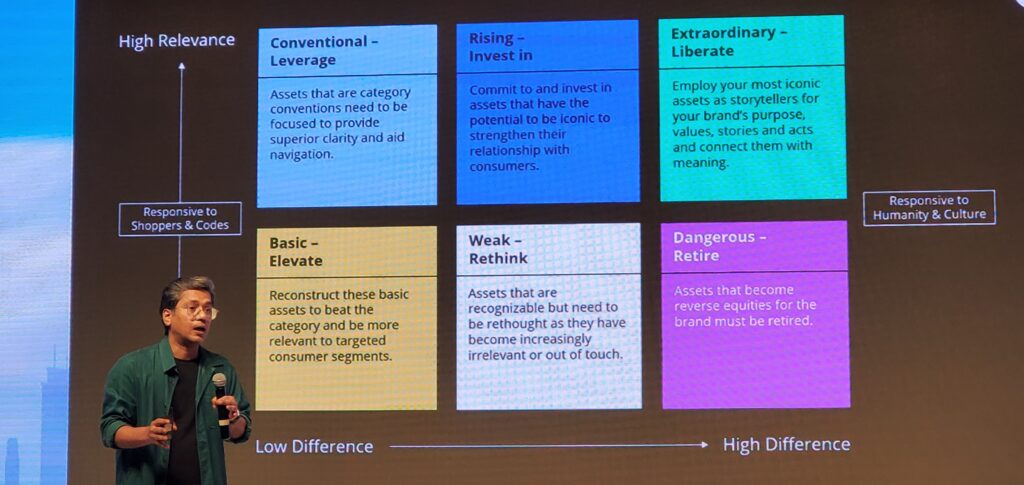
“Those are the old brands but there are brands who are really taking and embracing this change and using their sacred brand asset and activating them in a more meaningful way and in meaningful spaces where it really lives and connects with the customer. So, when we are talking, in this whole complex scenario at this moment, brands really need to invest in their most powerful brand assets and bring value. And as we all know, to create iconic brands, we all need to invest in iconic creation or sharpen our iconic brand assets. And what could these assets be? It could be a brand color, logo, topography, shape, voice or visuals. They all can become your sacred brand assets. But there are only two things that matter for brands and they are relevance and difference. When we talk about relevance, we know our brand is the most powerful platform for action for us and we need to make sure all our assets really work towards having the right and meaningful connection. But also, we know that we are working in a very competitive market. We have to be differentiated within the category – how can my assets help me stand out?”
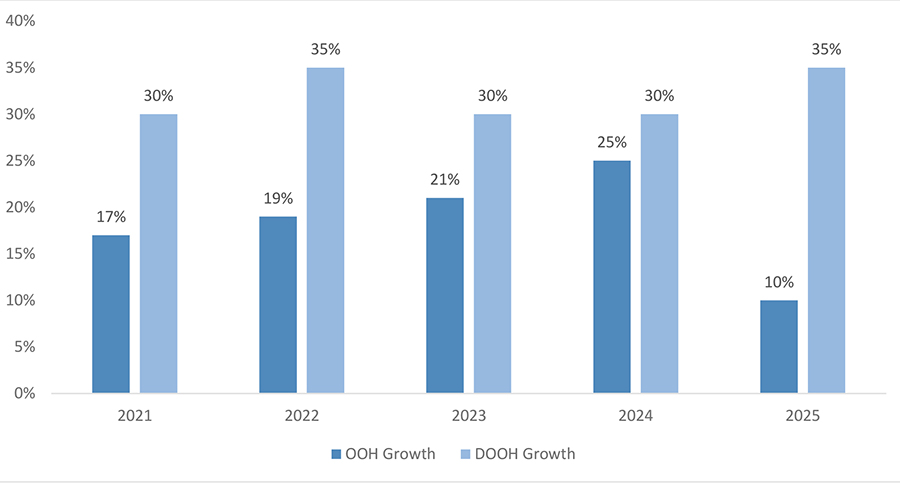
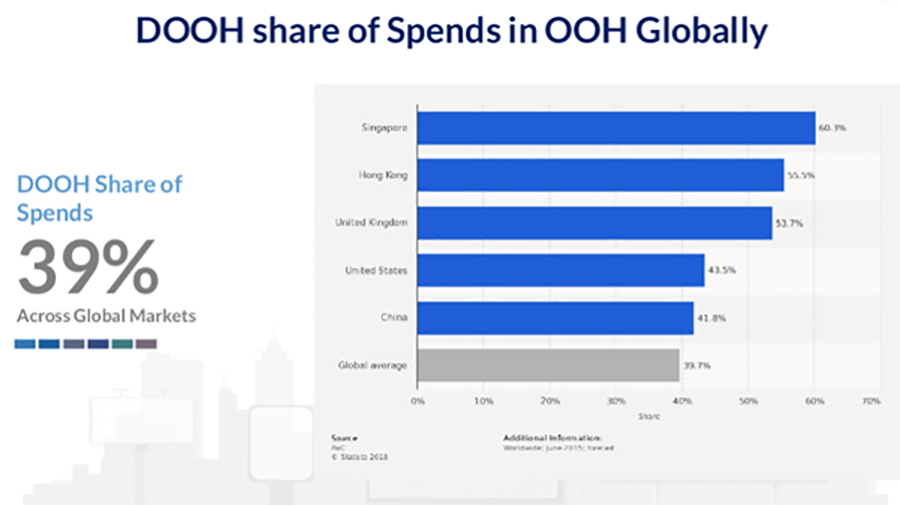
The pDOOH growth is predicated to the growth forecast for DOOH and will deliver greater outcomes, as per projections above by Magna-Global Ad Forecasts 2021, Rapport Market Intelligence.
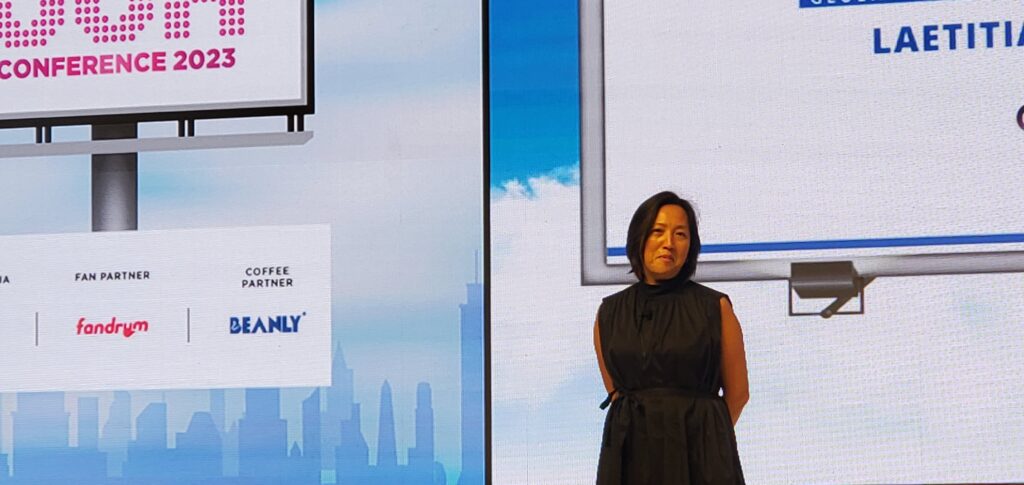
Laetitia Lim, CEO, Quividi , an AI & Computer vision-based platform providing real-time audience measurement and shopper engagement for DOOH. shared insights on the topic ‘Beating Expectations with Audience & Engagement Measurement Solutions’, saying The adoption of pDOOH is global. pDOOH and retail media are the two factors driving the growth of digital OOH. pDOOH ad spending is valued at $660 million currently, and likely to grow over 30-35% year on year. pDOOH and retail media are the two driving forces pushing for high fidelity data, which is a first party data that is unique.
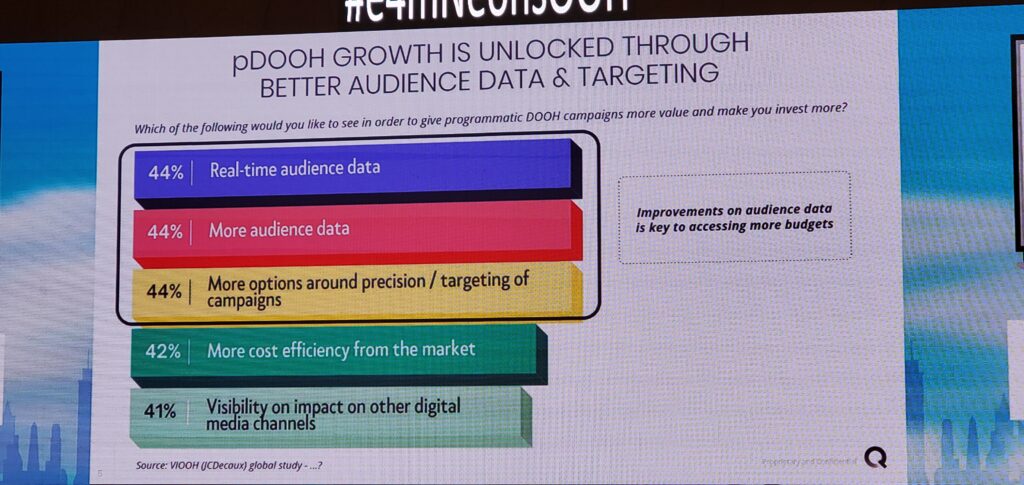
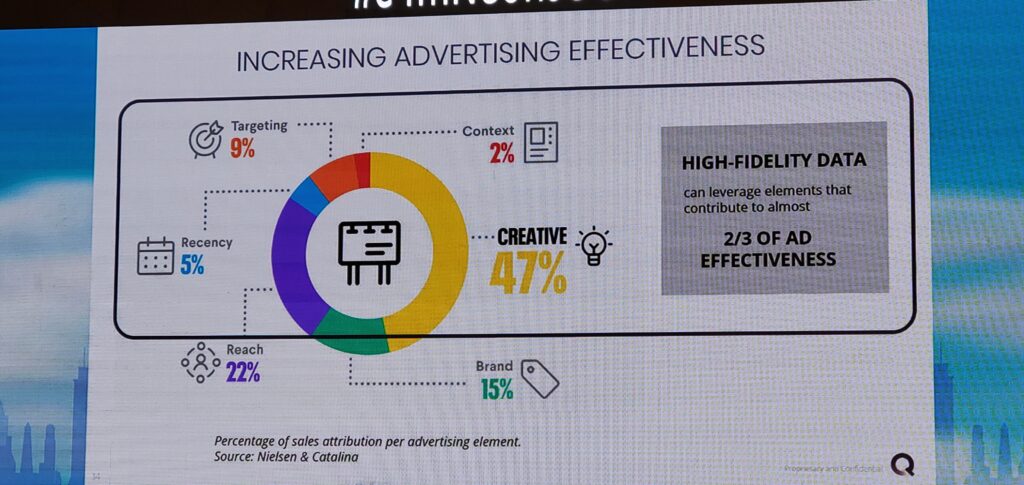
“High fidelity data is first party data and you are not dependent on third parties. Another element of this is being closer to ground truth. We need to count humans, not devices. It is real time data. High fidelity data is required to capture the full growth potential. The best-in-class DOOH networks already use high-fidelity data to unlock incremental ad budgets. By enabling a variety of monetisation models,” she highlihted.
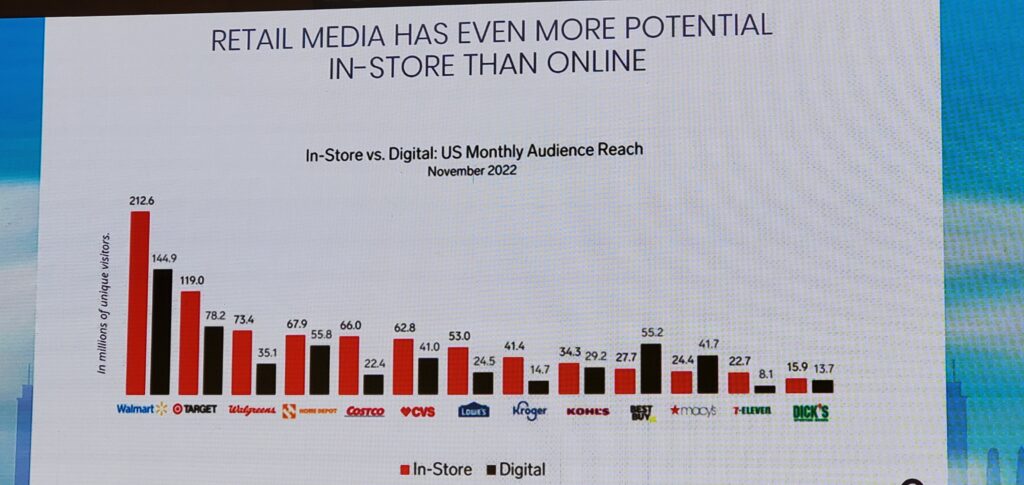
“We see two major growth drivers right now. The first one is pDOOH. As per the US market, today, Programmatic Digital Out-of-Home (pDOOH) Ad Spending is valued at $660 million. It is going to continue to grow over 30-35 % year on year to reach more than $1 billion within less than two years. It has grown from $205 million in 2021 to $660 in 2023,” she said.
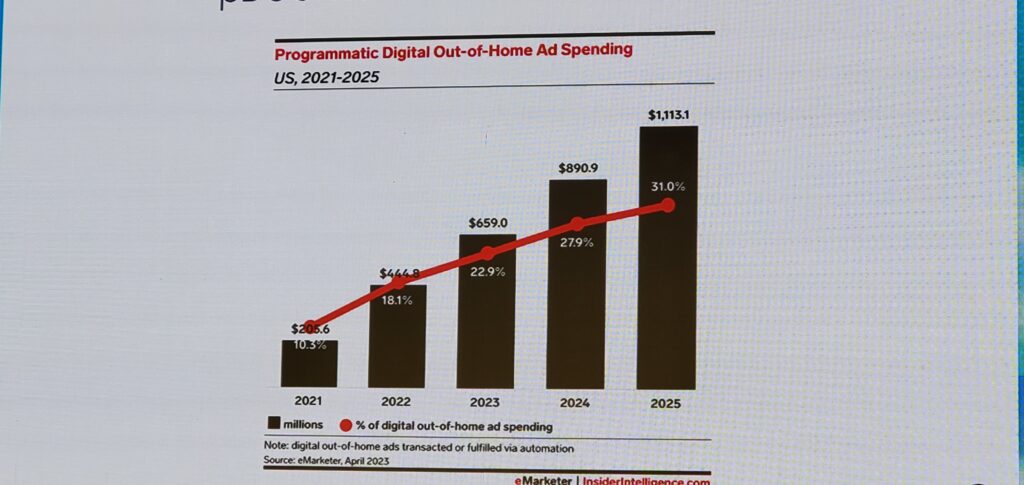
Lim pointed to the United Kingdom as an example, noting that pDoH revenue is projected to increase by 60% this year, reaching US$120 million, representing more than 10% of UK digital OOH revenues for the year.
“The adoption of pDOOH is global,” she said, adding that pDOOH can grow faster with better data and better targeting capabilities.
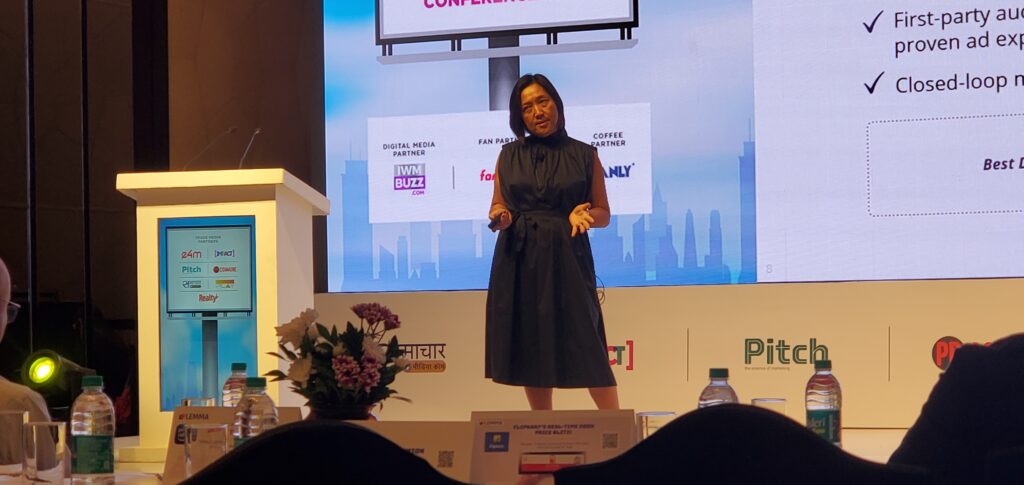
Talking about retail media, she said its ad spend will more than double by 2027.
“As per figures from online retail media spends in the US, $ 45 million is being spent already and is likely to grow to $100 million by 2027,” she said.
Explaining about her company’s role in DOOH, Lim said, “We use video sensors and AI to collect a real-time view on how people engage with campaigns and displays across age, gender etc with face detection capabilities.”
Programmatic technology has revolutionized digital media processes by introducing unprecedented levels of ease, transparency, and automation. As a result, traditional media channels such as Audio, Television, and Out of Home (OUH) are now being monetized programmatically through pDoH. pDoH is capable of supporting time-driven, location-driven, and even weather-driven advertising. In addition to enhancing a brand’s online-to-offline (OOH) strategy, Programmatic Dooh also improves the marketing strategy by allowing brand marketers to develop an Omnichannel Brand Presence. Given the significance of Omnichannel Strategies in contemporary advertising, the incorporation of Programmatic DoH assists brands in creating a comprehensive media strategy and enabling them to create meaningful consumer interactions at key touch points. Additionally, Programmatic Buying Capabilities are improving opportunities in Portfolios, making Dooh more precise, potent, and economical.
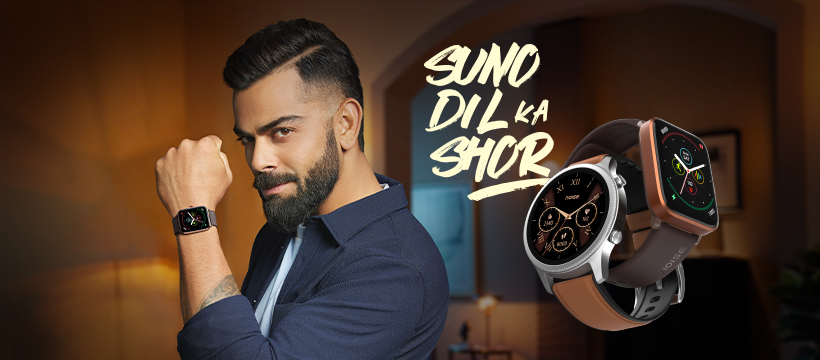
NOISE is ?????’? ??. ? ?????????? ???????*
*IDC Worldwide Quarterly Wearable Device Tracker, 3Q22
#ListenToTheNoiseWithin
Noise is a youth style brand that draws inspiration from the spirit of freedom and the desire to be noticed. Our team of young, creative professionals are passionate about providing creative and exciting accessories that meet the needs of our customers. We strive to provide our customers with the broadest selection of accessories that reflect their individual style without compromising on affordability.

Each of us has an inner voice, a burning flame within us that drives us to pursue our aspirations. It was this inner call to action that prompted the founding of the Khatri Brothers Company in 2014. What more fitting title could there be for their venture than ‘Noise’?
Noise initially focused on the sale of smartphone cases, however, upon the advent of the smartphone revolution, the company’s founders, Amit and Gaurav, realized that smartphone accessories would become the next major trend in India due to the fact that a phone is the focal point of the majority of people’s lives. As a result, Noise expanded its product range to include smart wearables, as well as wireless headphones.
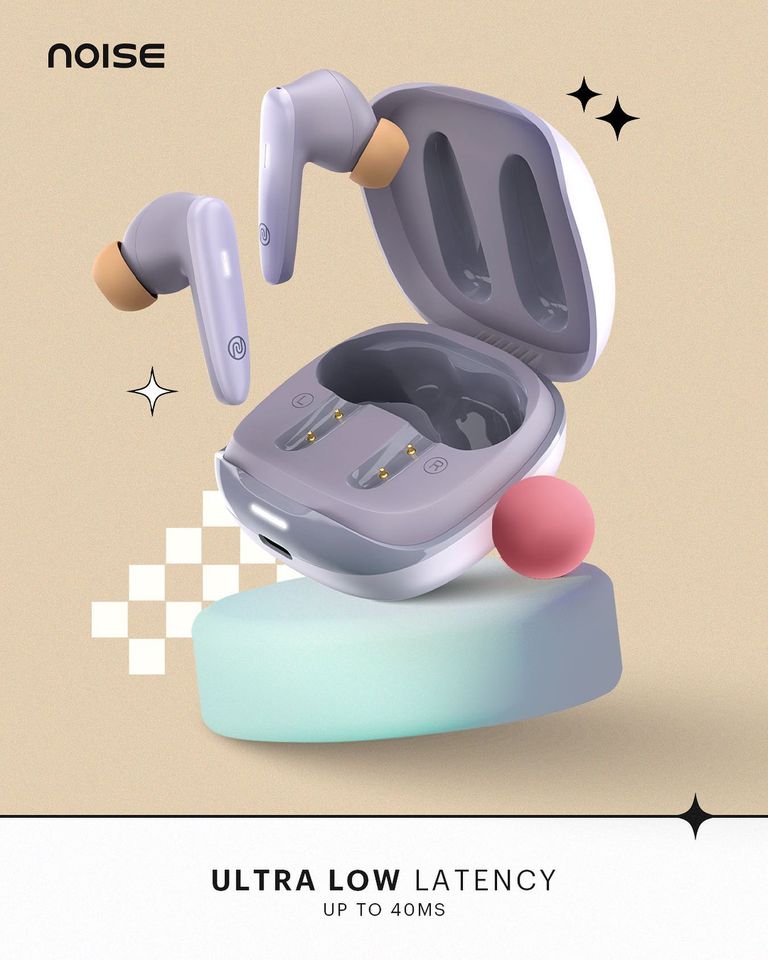
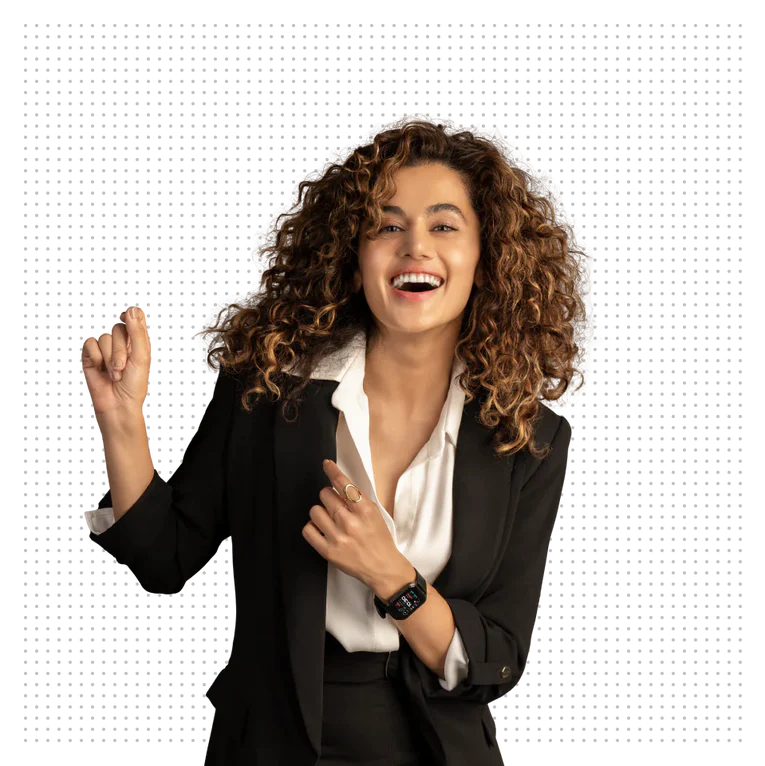
In fact, the company was among the first in India to offer true wireless earbuds, the Noise SHOTS.
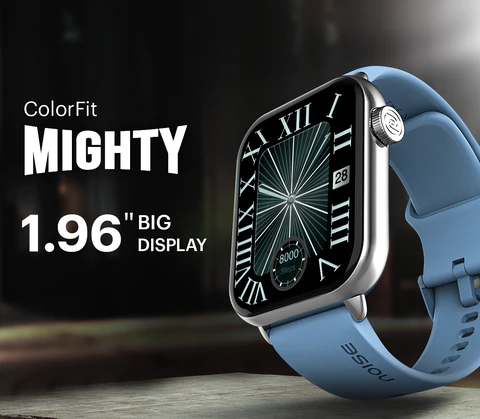
Noise provides young Indian consumers with access to the most up-to-date personal technology accessories at an affordable price point. For four consecutive years, we have been ranked as the #1 Brand on Amazon and #1 Brand on Flipkart. In 2019, we were the #1 Brand Selling Wireless Earphones in India. Additionally, we were the only Indian Brand among the Top 5 brands Selling Wireless Earmuffs in India.
